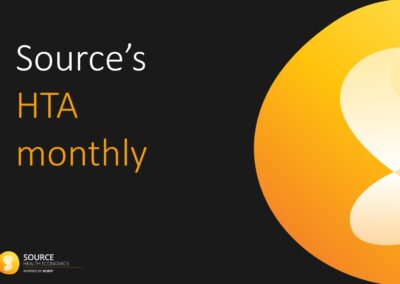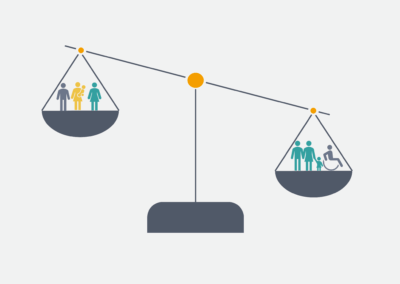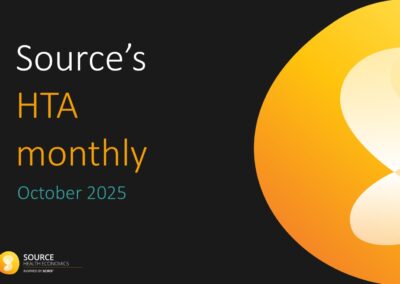Written by Amy Crompton, Systematic Review Analyst
Previously, we discussed the use of real-world evidence (RWE) in the reimbursement assessment of medical devices. In this latest blog, we present an overview of the RWE framework created by the National Institute for Health and Care Excellence (NICE).
At present, NICE are reviewing the methods and processes for health technology evaluation programmes (consultation ended on the 13th October 2021). The proposed new guidance puts “an emphasis on the role of a comprehensive evidence base, including non-randomised controlled trials and real-world evidence, and the circumstances in which different types of evidence have strengths or limitations” (1).
NICE have proposed three key principles to ensure the highest level of RWE is generated (2):
- The methodology should be systematic, transparent, and reproducible from planning to the reporting of results, detailing the curation of data and statistical analysis
- Data sources should be identified, and their quality and relevance demonstrated
- Data should be analysed appropriately, and bias should be assessed and ideally quantified.
NICE refer to Wang et al, 2017 (3) for appropriate study design features which ensure reproducibility in pharmaceutical database studies, and also propose the following to increase validity and reduce bias in RWE studies:
- The chosen study design for the research question and the source of any variation in exposure should be justified
- Studies should be planned prospectively, and the protocol should be registered
- The analytical approach should allow for observed and unobserved confounding variables
- Best practice guidelines should be followed (e.g. include an active comparator)
- If possible, the balance of baseline patient characteristics across study groups should be reported, while study limitations should be addressed
- Sensitivity analyses should be conducted, ideally pre-specified in the protocol, but may be post-hoc with clear rationale
- Data curation should be fully described, justified, and potential implications on the results explored in sensitivity analysis
- The risk of bias should be assessed using a validated tool relevant to the study design and intervention. A commonly used tool for observational studies is the Newcastle-Ottawa scale (4), however at present, no single tool assesses all risks of bias commonly associated with non-randomised studies (5).
Aetion collaboration with NICE
Aetion, a European Network of Centres for Pharmacoepidemiology and Pharmacovigilance (ENCePP)-designated research centre, generate decision-grade RWE for manufacturers, purchasers, and regulators, with the Aetion Evidence Platform® (6). The platform sources data from Cegedim Health Data’s The Health Improvement Network® (THIN®) database (6) (a European database of anonymous and non-extrapolated electronic health records obtained from physicians’ records, referenced by healthcare authorities in the UK and France (7)). Aetion recently announced a collaboration with the NICE to evaluate the use of RWE to inform clinical guidance (6).
Aetion will support NICE’s 5-year strategy to minimise uncertainties in NICE guidance development and increase patient access to innovation in healthcare by integrating RWE into the evaluation processes to inform more robust decisions and resolve knowledge gaps (8). The strategy aims to link RWE with evidence-based practice to produce more dynamic, living guidance recommendations, rather than guidance produced at a single timepoint, and to shift “from health technology assessment to health technology management” (8). The collaboration will also evaluate the optimal timing for conducting RWE studies on comparative effectiveness post-launch, along with tools for the planning and reporting of RWE implementation.
Conclusions
Recent proposed updates to the NICE methods and processes guide incorporates a new emphasis on RWE. The new 5-year strategic vision in collaboration with Aetion will provide insight into the application of RWE to fill evidence gaps, aiming to minimise uncertainties in NICE guidance development. The strategy includes moving towards producing more dynamic living guidance, with RWE contributing to evidence gaps, rather than a static guidance decision at one single point in time.
If you would like to learn more about systematic literature reviews, please contact Source Health Economics, an independent consultancy specialising in evidence generation, health economics, and communication.
References
- NICE. Review of methods for health technology evaluation programmes: proposals for change 2021 [Available from:https://view.officeapps.live.com/op/view.aspx?src=https%3A%2F%2Fwww.nice.org.uk%2FMedia%2FDefault%2FAbout%2Fwhat-we-do%2Four-programmes%2Fnice-guidance%2Fchte-methods-and-processes-consultation%2Fmethods-proposal-paper.docx&wdOrigin=BROWSELINK.
- NICE. Appendix I: Real World Evidence Framework. Available at:https://view.officeapps.live.com/op/view.aspx?src=https%3A%2F%2Fwww.nice.org.uk%2FMedia%2FDefault%2FAbout%2Fwhat-we-do%2Four-programmes%2Fnice-guidance%2Fchte-methods-and-processes-consultation%2Fappendix-real-world-evidence-framework.docx&wdOrigin=BROWSELINK. 2021.
- Wang SV, et al. Reporting to Improve Reproducibility and Facilitate Validity Assessment for Healthcare Database Studies V1.0. Pharmacoepidemiol Drug Saf. 2017;26(9):1018-32.
- Wells G, et al. The Newcastle–Ottawa Scale (NOS) for Assessing the Quality of Non-Randomized Studies in Meta-Analysis. 2000.
- Andrea E, et al. How well can we assess the validity of non-randomised studies of medications? A systematic review of assessment tools. BMJ Open. 2021;11(3):e043961.
- Aetion. Aetion and NICE announce collaboration to explore use of real-world evidence for comparative effectiveness studies to inform clinical guidance 2021 [Available from:https://aetion.com/company/news/aetion-nice-collaboration-real-world-evidence-comparative-effectiveness/.
- Cegedim Health Data. THIN : The Health Improvement Network [Available from:https://www.cegedim-health-data.com/cegedim-health-data/thin-the-health-improvement-network/.
- NICE. NICE strategy 2021 to 2026 2021 [Available from:https://www.nice.org.uk/about/who-we-are/corporate-publications/the-nice-strategy-2021-to-2026.




